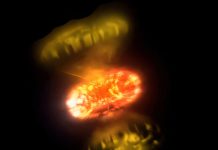
Mathematics has a branch called topology that studies the properties of shapes and objects that remain unchanged even when they are stretched or bent.
While most people are familiar with three-dimensional objects, mathematicians and physicists also explore the properties of objects in higher dimensions.
This kind of research can help in understanding the structure of the universe and even contribute to the development of quantum computing.
A recent study examined electromagnetic waves on surfaces and found something unexpected. The researchers looked at interference patterns created by these waves, which are formed when waves overlap and interact.
Even though the patterns seemed different, the usual methods in two-dimensional topology could not tell them apart. The only way to distinguish them was by referring to an original, higher-dimensional structure—a special kind of crystal.
This discovery supports an idea proposed by physicists Paul Steinhardt and Dov Levine, who had built on the earlier work of Sir Roger Penrose, a British mathematician who won the 2020 Nobel Prize in Physics. Their theory explains that these patterns follow hidden rules that only become clear when viewed from a higher-dimensional perspective.
The study also revealed another fascinating effect. Two different surface wave patterns, which should have been distinct, appeared identical when measured after an extremely short time. This time was in the range of attoseconds, which is a billionth of a billionth of a second.
According to Steinhardt and Levine’s explanation, this strange effect occurs because of a “competition” between two forces: the topological properties (which describe the fundamental structure of the waves) and thermodynamic properties (which are related to energy and stability).
To make these discoveries, the researchers used two different techniques. The first was near-field scanning optical microscopy, performed in Professor Guy Bartal’s laboratory by Dr. Kobi Cohen.
The second method was two-photon photoemission electron microscopy, done through a collaboration between researchers at the University of Stuttgart and the University of Duisburg-Essen in Germany. By using these techniques, the team was able to study the detailed behavior of electromagnetic waves and how their patterns change.
These findings could lead to new ways of measuring the properties of special types of materials called quasiperiodic crystals. Unlike ordinary crystals, which have repeating patterns, quasiperiodic crystals have structures that never repeat exactly but still follow mathematical rules.
Understanding their thermodynamic and topological properties could be useful in several advanced fields, including materials science and information technology.
In the future, the researchers plan to expand their work by exploring similar effects in other physical systems. One exciting possibility is that these unique topological properties could be used to store and transfer information in a highly secure and efficient way.
Since higher-dimensional structures hold more complex patterns than ordinary three-dimensional systems, they could provide a new way to encode data.
Overall, this study not only confirms existing theories but also opens up new questions about the relationship between topology, energy, and time. By continuing to explore these hidden patterns, scientists may uncover new ways to use mathematics and physics in technology and fundamental research.
The research findings can be found in Science.
Copyright © 2025 Knowridge Science Report. All rights reserved.



